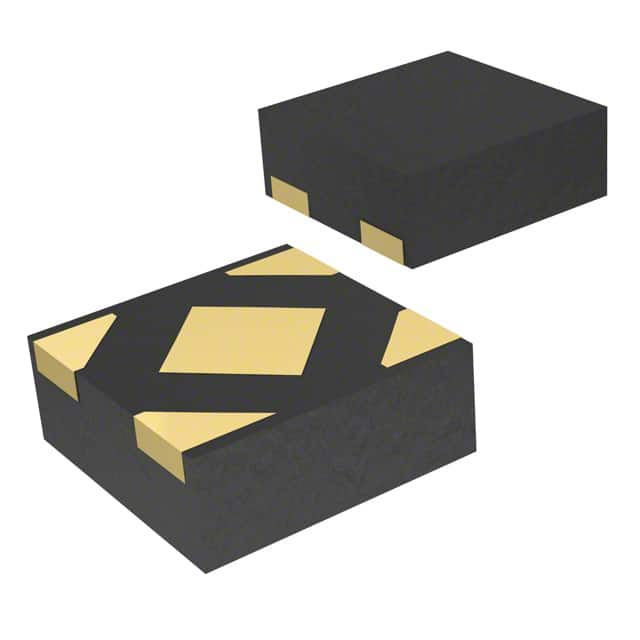TPS3831K33DQNT
Product Overview
Category
The TPS3831K33DQNT belongs to the category of voltage supervisors.
Use
It is primarily used for monitoring and supervising voltage levels in electronic systems.
Characteristics
- Low-power consumption
- Wide operating voltage range
- High accuracy
- Adjustable threshold voltage
- Small package size
Package
The TPS3831K33DQNT is available in a small SOT-23-5 package.
Essence
The essence of the TPS3831K33DQNT is its ability to provide accurate voltage monitoring and supervision, ensuring the proper functioning of electronic systems.
Packaging/Quantity
The TPS3831K33DQNT is typically packaged in reels containing 3000 units.
Specifications
- Supply Voltage Range: 1.6V to 6.5V
- Threshold Voltage Options: 2.93V
- Operating Temperature Range: -40°C to +125°C
- Quiescent Current: 1.8µA (typical)
- Power-On Reset Delay Time: 200ms (typical)
Detailed Pin Configuration
The TPS3831K33DQNT has the following pin configuration:
- GND (Ground)
- VDD (Supply Voltage)
- MR (Manual Reset)
- RESET (Reset Output)
- NC (No Connection)
Functional Features
- Accurate voltage monitoring
- Power-on reset generation
- Manual reset input
- Open-drain reset output
- Low quiescent current
Advantages and Disadvantages
Advantages
- Low power consumption
- Wide operating voltage range
- Adjustable threshold voltage
- Small package size
Disadvantages
- Limited threshold voltage options
- No built-in hysteresis
Working Principles
The TPS3831K33DQNT operates by comparing the monitored voltage with a fixed threshold voltage. When the monitored voltage falls below the threshold, the reset output is asserted, indicating a power-on reset condition. The manual reset input allows for external control of the reset function.
Detailed Application Field Plans
The TPS3831K33DQNT finds applications in various electronic systems where accurate voltage monitoring and supervision are critical. Some potential application fields include:
- Battery-powered devices
- Microcontrollers and microprocessors
- Industrial automation systems
- Automotive electronics
- Power management circuits
Detailed and Complete Alternative Models
- TPS3830K33DQNT: Similar to TPS3831K33DQNT but with a different threshold voltage option (3.08V).
- TPS3832K33DQNT: Similar to TPS3831K33DQNT but with a different threshold voltage option (2.63V).
- TPS3831K50DQNT: Similar to TPS3831K33DQNT but with a higher threshold voltage option (4.63V).
These alternative models provide flexibility in choosing the appropriate threshold voltage for specific applications.
In conclusion, the TPS3831K33DQNT is a voltage supervisor that offers accurate monitoring and supervision capabilities. Its low-power consumption, wide operating voltage range, and small package size make it suitable for various electronic systems. However, it has limited threshold voltage options and lacks built-in hysteresis. Nonetheless, it serves as a reliable component in battery-powered devices, microcontrollers, industrial automation systems, automotive electronics, and power management circuits. Alternative models with different threshold voltage options are available to cater to specific application requirements.
Senaraikan 10 soalan dan jawapan biasa yang berkaitan dengan aplikasi TPS3831K33DQNT dalam penyelesaian teknikal
Sure! Here are 10 common questions and answers related to the application of TPS3831K33DQNT in technical solutions:
1. What is the TPS3831K33DQNT? - The TPS3831K33DQNT is a voltage supervisor and reset IC (Integrated Circuit) designed for monitoring the power supply voltage in electronic systems.
2. What is the operating voltage range of TPS3831K33DQNT? - The operating voltage range of TPS3831K33DQNT is from 1.8V to 5.5V.
3. How does TPS3831K33DQNT help in system reliability? - TPS3831K33DQNT provides accurate monitoring of the power supply voltage, ensuring that the system operates within safe voltage limits. It can generate a reset signal when the voltage falls below a certain threshold, preventing erratic behavior or damage to the system.
4. Can TPS3831K33DQNT be used in battery-powered applications? - Yes, TPS3831K33DQNT can be used in battery-powered applications as it has a low quiescent current and operates at low voltages, making it suitable for energy-efficient designs.
5. What is the typical reset threshold voltage of TPS3831K33DQNT? - The typical reset threshold voltage of TPS3831K33DQNT is 3.08V.
6. Does TPS3831K33DQNT have any built-in delay for the reset signal? - Yes, TPS3831K33DQNT has a fixed delay of approximately 200ms for the reset signal to ensure stable power supply before the system starts operation.
7. Can TPS3831K33DQNT be used in automotive applications? - Yes, TPS3831K33DQNT is AEC-Q100 qualified, making it suitable for automotive applications where reliable voltage monitoring and reset functionality are required.
8. What is the package type of TPS3831K33DQNT? - TPS3831K33DQNT is available in a small SOT-23-3 package, which is commonly used in space-constrained designs.
9. Is TPS3831K33DQNT compatible with other microcontrollers or processors? - Yes, TPS3831K33DQNT can be easily integrated with various microcontrollers or processors as it provides an active-low reset output signal that can be connected to the respective reset pin of the target device.
10. Can TPS3831K33DQNT be used in industrial control systems? - Absolutely! TPS3831K33DQNT is well-suited for industrial control systems where reliable power supply monitoring and reset functionality are crucial for maintaining system integrity and preventing data loss or equipment damage.
Please note that these answers are general and may vary depending on specific application requirements.


